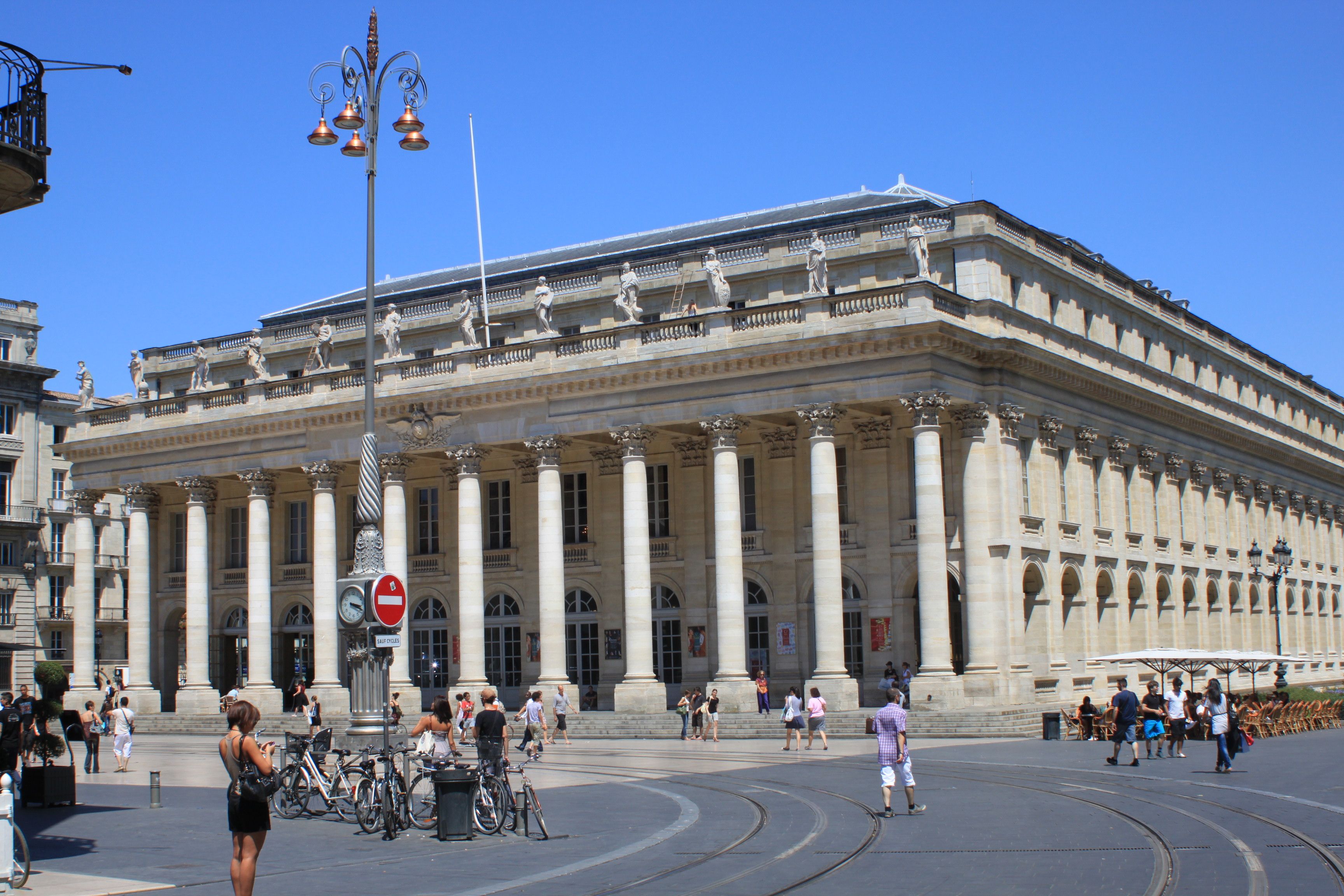French monuments outside Paris can have difficulty getting the attention they deserve. To prove I am not too “Parisianist”, I am writing today about a building that ranks among the most perfect works of French eighteenth-century architecture: Victor Louis’s Grand Théâtre de Bordeaux.

Beyond its design qualities, what gives this building its place in French architectural history is that it was built at the time when the theater as a building type was being developed. Voltaire and the authors of the Encyclopédie had been complaining for decades that Paris had no theater buildings worthy of what was being played in them. By the 1770s, it was determined that this was to be fixed.
A new Comédie was to be built in Paris – the building today known as the Théâtre de l’Odéon, designed by Charles de Wailly and Marie-Joseph Peyre. But the third Duke of Richelieu, one of the most important figures in the Kingdom, decided to have a theater built in Bordeaux, capital of the region of which he was governor. As great as the architectural qualities of the Paris theater are, it is Victor Louis’s Bordeaux theater that had the greatest impact nationally and internationally.
Louis’s Bordeaux theater, built from 1772 to 1780, strikingly marks the birth of the theater as an urban monument, a free-standing structure that gives form to the space of the city. It also contains many design innovations in its lay-out and functioning as a performance space. From an architectural point of view, it reflects Louis’s mastery of the French design tradition, as well as the deep understanding of the craft of building he gained from his father, a stonemason.
Since its opening, the Grand Théâtre de Bordeaux has served as a reference in the design of French theaters. Gabriel Davioud used many aspects of the organization in his twin theaters on the Place du Châtelet in Paris. Charles Garnier, in his design for the Opéra de Paris, used the same scheme of a grand staircase leading to lateral foyers on the second floor.
Louis also designed Richelieu Hall in the Palais-Royal in Paris, where the Comédie Française plays today, as well as a number of private residences and churches. But the French Revolution prematurely ended his career and – although he did not suffer the ignominy of going to jail like Ledoux – it put him on a path of ruin. Louis died in 1800, at the age of 69.





One thought on “Victor Louis’s Grand Théâtre de Bordeaux”